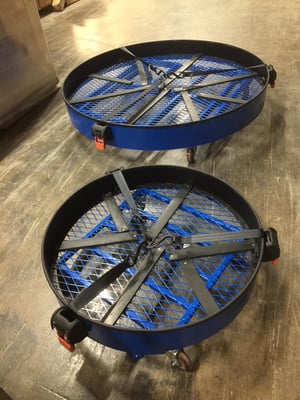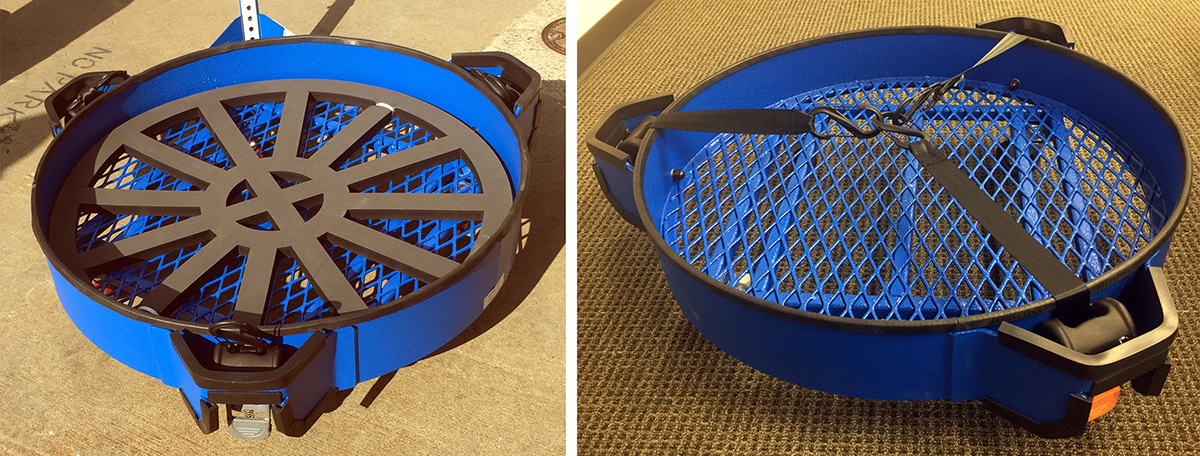 USA Patent Number 10,286,943
USA Patent Number 10,286,943
European Patent Application No. 19 170 823.9
Aircraft are delicate instruments—particularly their engines. Because they’re so delicate, yet crucial for the safe operation of an airplane, aircraft engines require frequent servicing. However, proper servicing may demand that the engine is removed from the aircraft so the mechanic can access every part of the engine without risking damage to the aircraft’s frame.
Moving a heavy and delicate aircraft engine around the tarmac (or even just within the confines of a service hangar) is a demanding and delicate task. The kind of heavy-duty carts and baskets that are customarily used for such work can cause scratches because of the metal-on-metal contact that happens in conjunction with rough movement. Some carts lack the ability to restrain held engines—which means they could topple over, fall off the cart, or otherwise get severely damaged.
When some of Marlin’s aerospace industry clients asked for a superior airplane engine handling solution, Marlin’s degreed engineers decided to create a new kind of cart to address many of the common issues with moving large, heavy aircraft engines/turbines around. This solution was the Marlin Steel circular float.
How the Marlin Steel Circular Float Reduces Scrap and Waste

To make the most versatile and useful tool possible, Marlin’s engineering team made numerous tweaks to the circular float’s design meant to address the specific challenges that Marlin’s clients have come across when moving large aircraft turbines around, including:
- Added Protection On the Rim and Base. By adding semi-soft protective coating materials to the bottom of the circular float and its rim, Marlin eliminated the risk of metal-to-metal contact. This helps to ensure that your engine’s parts don’t get scratched—which means saving precious time and money on rework.
- Expanded Metal Basket. The open space offered by the expanded metal base provides openings for bolts/debris to exit out the bottom. This thoughtful design reduces the chances of screws scratching the turbine.
- Adjustable Straps. A set of adjustable straps was added to the float to hold the engine in place securely as it migrates throughout the plant. This minimizes the chance of the engine toppling over when being moved.
- Solid Casters. To hold the weight of a 60” Pratt Whitney or Rolls Royce system, heavy-duty solid caster wheels were used for the float. The straps allow you to safely and easily move your aircraft engines through your facility.
- Tug Eye Bolts. It may be necessary to move numerous turbines/engines at once when servicing/refurbishing craft on a busy airfield. Tug eye bolts were added to the design to allow several floats to be connected so that a driver can pull many in one trip for more efficiency.
- Perimeter Steel Wall. To protect against inadvertent collisions with other objects, a protective steel wall was added to the side of the float. The benefit of this is that it prevents damage—meaning, less rework and scrap.
- USA Made. As with all of Marlin’s custom steel products, these circular floats are made in the USA to match high quality and safety standards—so you can rest easy knowing you have a safe, top-quality product.
Do you need a reliable aircraft turbine/engine handling solution for your airfield. Or, do you have questions about custom metal forms for other aerospace industry applications? Contact Marlin Steel today to get answers to your questions, or to get started on your custom metal form order!



.gif)


